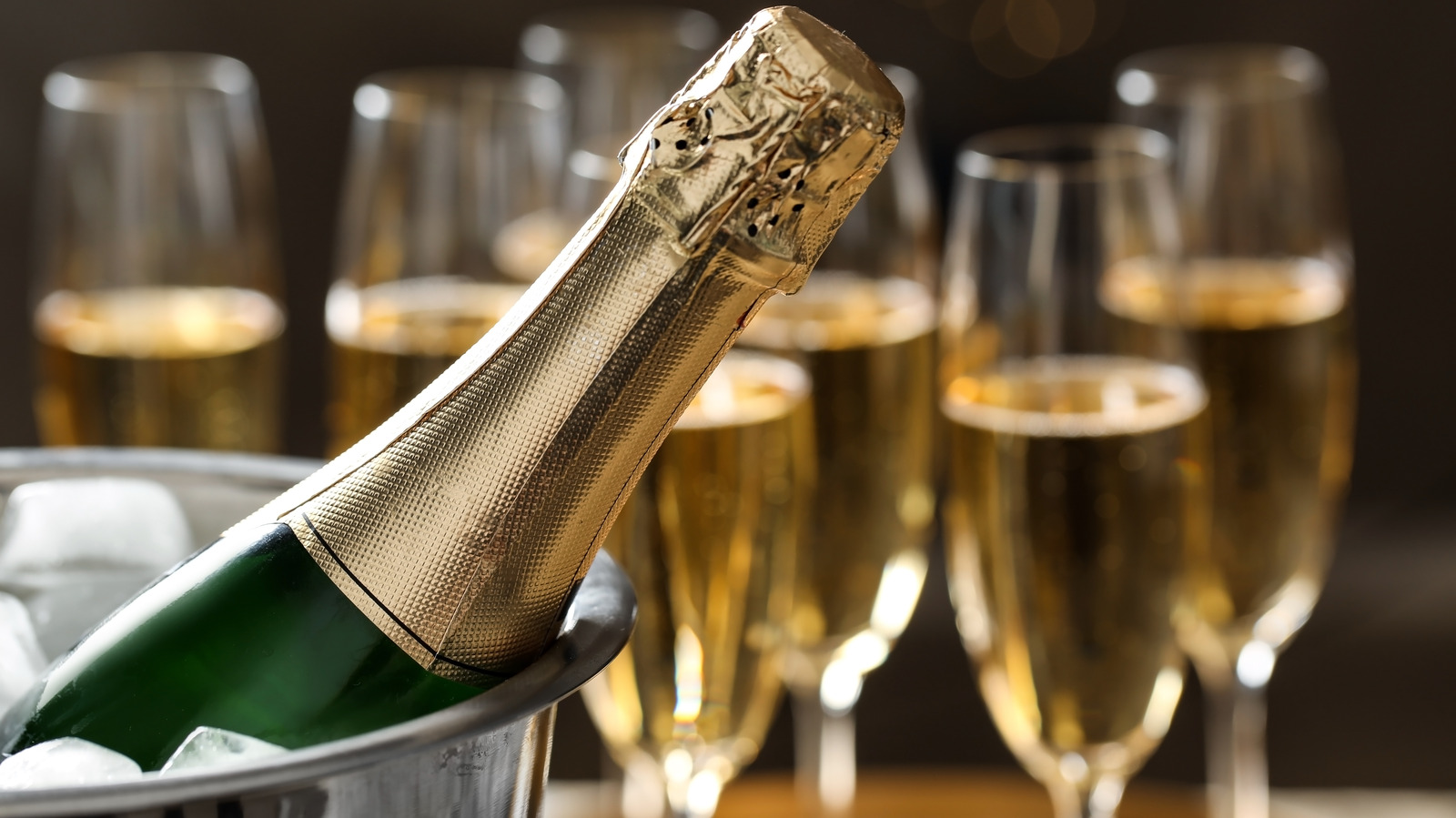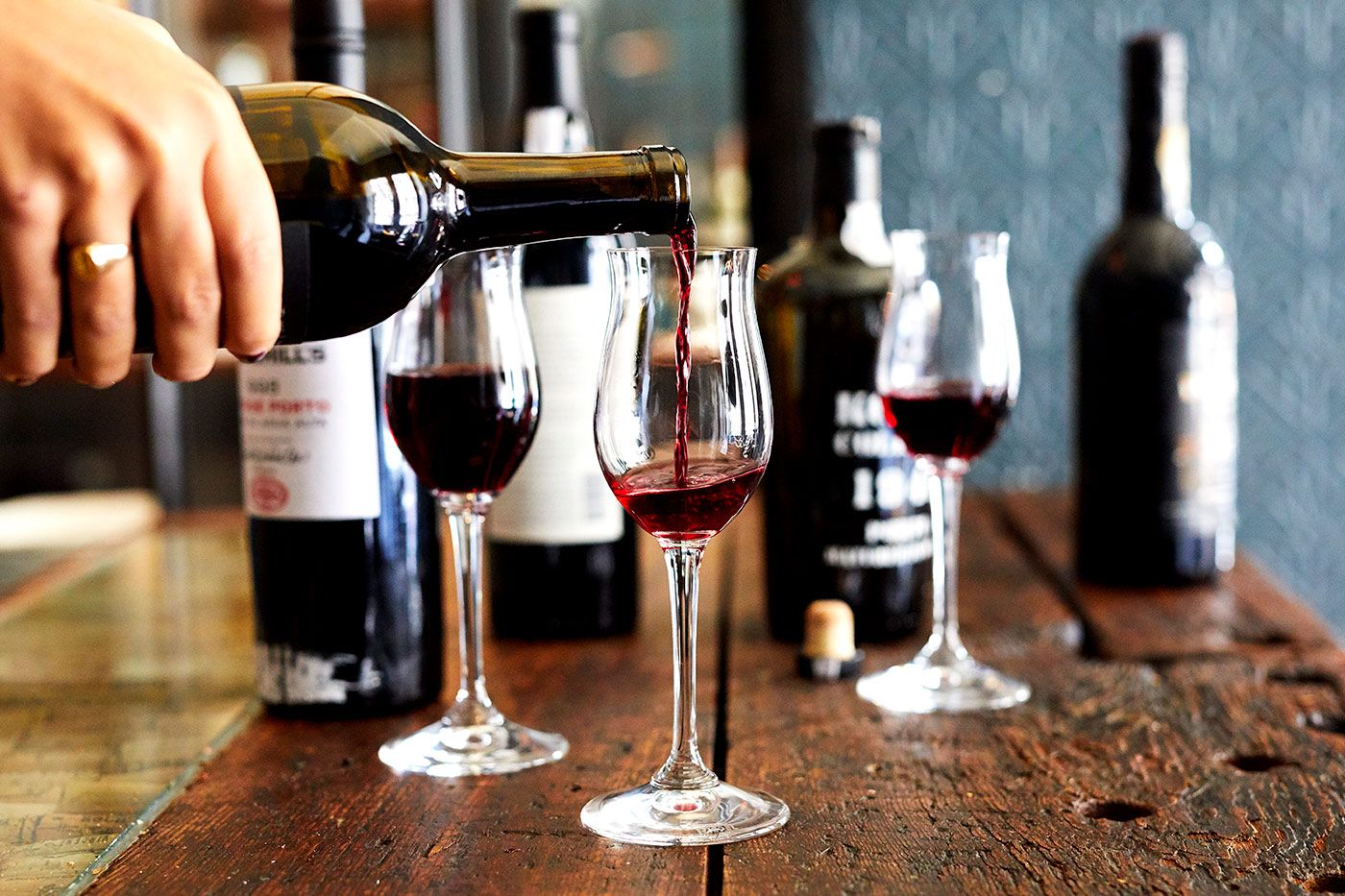The sheer variety of wine bottles on store shelves or restaurant lists can be overwhelming. There are thousands of grape varieties in the world and even more kinds of wines made from them. Understanding a little more about the general wine types, their flavors, and how they’re made can help you choose the best wine to go with your moment or mood.
What Are the Different Types of Wine?
Wine can be broadly broken down into a few main types:
- Red wines are defined by their dark fruit flavors and tannins that make them a great match for food. Oak aging plays a part in many red wines.
- White wines tend to be more tart and refreshing than reds, with aromatic notes like flowers, citrus, and orchard fruits. White wines are usually lighter in body and in alcohol.
- Rosé, sparkling, and fortified wines. These styles of wine are often paired with a matching occasion: rosé wine during the summer, sparkling wine for special events, and fortified wine after a big meal.
 All About Red Wine
All About Red Wine
Red wines are made from black-skinned grapes that have colorless juice. When the grapes are pressed at the winery the grape skins mix with the juice (called must) to create a reddish-purple beverage.
- Tannins. The grape skins also contain tannins, the compounds responsible for red wine’s bitterness and mouth-drying quality. The tannins in red wine act as a preservative, which means that red wines with higher tannin can generally age longer than white wines (which don’t have tannin) or red wines with lower tannin. As they age, the tannins and anthocyanins in red wine fall out of suspension, forming sediment at the bottom of the bottle. This sediment can be removed by decanting.
- Aging. Many red wines are aged in new oak barrels to add flavors and aromas of sweet baking spice, cocoa, chocolate, and vanilla to the wine. Oak barrel aging also softens the tannin structure of red wine, making the wine taste smoother.
- Taste. The flavors and aromas of red wine vary depending on the aging method and grape varieties included. Fruit flavors in red wines include red fruit (like strawberry, raspberry, red cherries, red plum, pomegranate, cranberry), black fruit (like black cherry, black plum, blackberry, blackcurrant), and blue fruit (blueberry). Warmer climates produce wines with riper, jammier fruit qualities. In the Old World, earthy aromas like potting soil, wet leaves, and barnyard are common.
- Varietals. Red wines can be varietal wines made from a single type of red grape. These wines will be labeled with the name of the grape (more common in New World wine regions like the US, South America, Australia and New Zealand, and South Africa) or the name of the wine’s appellation, like Burgundy. Some grapes have different names depending on where they are grown, like French syrah, which is known as shiraz in Australia.
 All About White Wine
All About White Wine
White wines are made from green-skinned grapes whose juice is also colorless. For white wines, the grape skins are removed from the must before fermentation. Acid structure and aroma are more important in white wines because they lack the tannins that red wines have from contact with the grape skins.
- Aging. White wines are more likely to be aged in stainless steel barrels, a technique which maintains their fresh aromatics. Oak aging can add aromas and flavors of vanilla, baking spices, coconut, and caramel to white wines.
- Varietals. White wines are most often varietal wines made from one grape variety. Like red wines, they will usually be labeled by variety in the New World and by appellation in the Old World. White wines made from a blend of grapes are more common in certain areas, including Spain, Bordeaux, and France’s southern Rhône.
- Taste. White wines can range from dry to sweet in style. Classic dry white wines include Italian pinot grigio, French muscadet, or Austrian grüner veltliner. Some producers make dry wine and sweet wine from the same grapes. In Germany, riesling grapes are harvested at varying levels of ripeness to make different types of wine, some sweet, some dry, from the same vineyard. In France’s Loire Valley, producers growing chenin blanc grapes will make dry sparkling wine in cool vintages and sweet dessert wine in warm vintages.
- Aroma. Some white wine grapes, including gewürztraminer, muscat, riesling, and pinot gris, are considered aromatic, meaning they have powerful fruit and floral aromas. Semi-aromatic grapes include sauvignon blanc, and albariño from Spain. Neutral grapes, like chardonnay, have less distinct aromas but respond well to winemaking processes like oak aging or sparkling winemaking. Many white wines also have stone fruit aromas like peach, nectarine, apricot, apple and pear. Floral, herbaceous, and mineral are common non-fruit descriptors for white wines.
- Climate. The flavors and aromas of white wines vary based on the grape and the climate they are from. Warmer climates tend to produce riper tropical fruit aromas like guava, passionfruit, pineapple, and melon. Citrus, like lemon, lime, grapefruit and orange dominate in cool climate wine regions.
:max_bytes(150000):strip_icc()/White-Zinfandel-vs-Rose-3x2-1-60e7c76c353245939a96e0c0bed5da17.png) All About Rosé
All About Rosé
Rosé wines are made from red grapes, but the grape skins are removed from the must after a short period of maceration (usually less than 24 hours). The skins give the wine its pink color but do not impart much tannin. Rosé wines can have flavors common to red wines, like strawberry, cherry, and raspberry, and also more typical white wine flavors, like citrus and tropical fruit.
 All About Sparkling Wines
All About Sparkling Wines
Sparkling wines can be white, rosé, or red in color. They can be made from any grape varieties, depending on the appellation rules of the area where they are made. Sparkling wines can be single-varietal wines or made from a blend of grapes. Sugar content in sparkling wines varies from dry (like brut nature Champagne) to sweet (like Moscato d’Asti). Most sparkling wines contain a few grams of sugar to balance their high acidity.
Two of the most well-known sparkling wines are Champagne and prosecco.
Champagne can be a varietal wine (made from one variety, such as chardonnay, pinot noir, or pinot meunier) or a blended wine, made from a blend of the permitted grapes. It is made in the méthode champenoise, also called the traditional method, which involves a primary alcoholic fermentation followed by a secondary fermentation in the bottle to produce its bubbles.
Prosecco, which is always a varietal wine made from the glera grape, is made via the Charmat method, where the secondary fermentation happens in a large closed tank before the wine is bottled.
 All About Fortified Wines
All About Fortified Wines
Fortified wines (called vin de liqueur in Europe) are made by adding distilled grape spirit to fully- or partially-fermented wine. Most fortified wines are sweet, with the exception of certain dry styles of sherry. Fortified wines include Port, Madeira, Marsala, sherry, macvin, and the vin doux naturels of southern France. Fortified wines like vermouth are sometimes aromatized with herbs and botanicals. Fortified wines are higher in alcohol than other types of wine.

